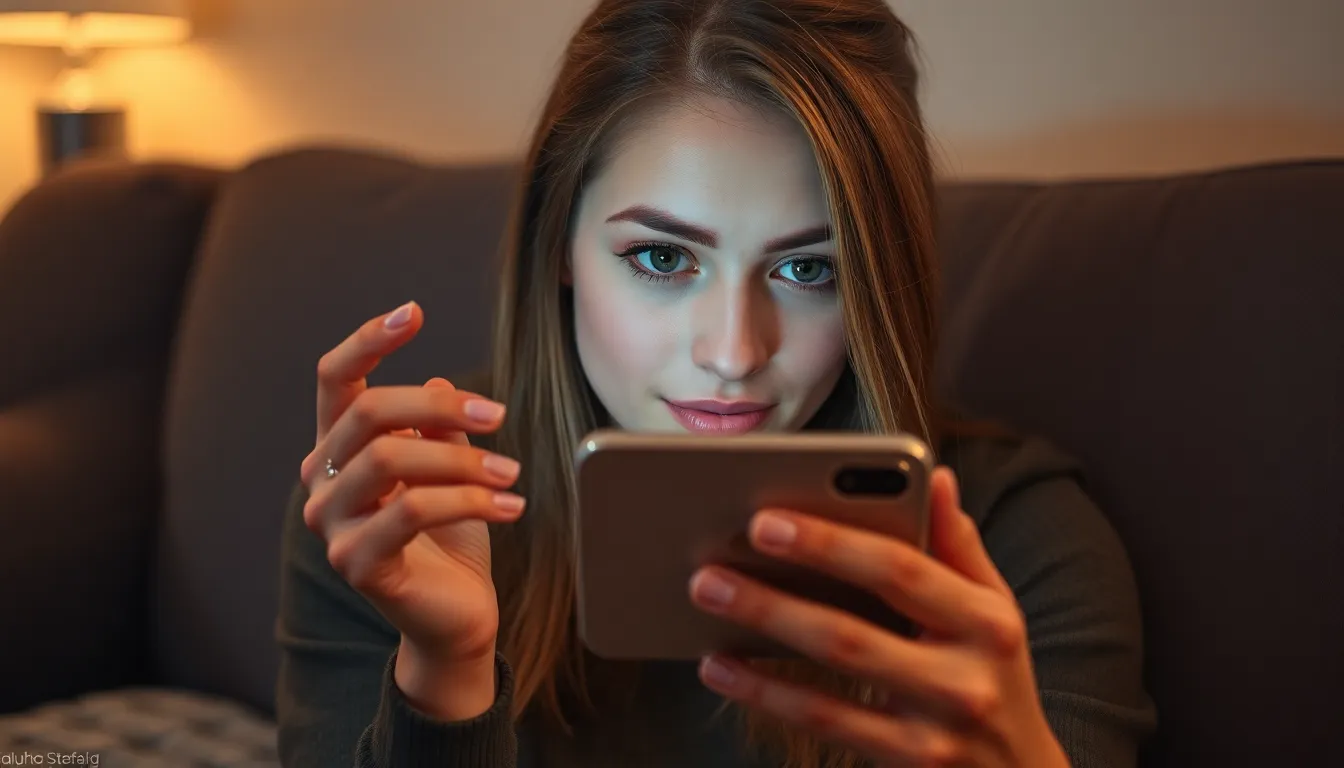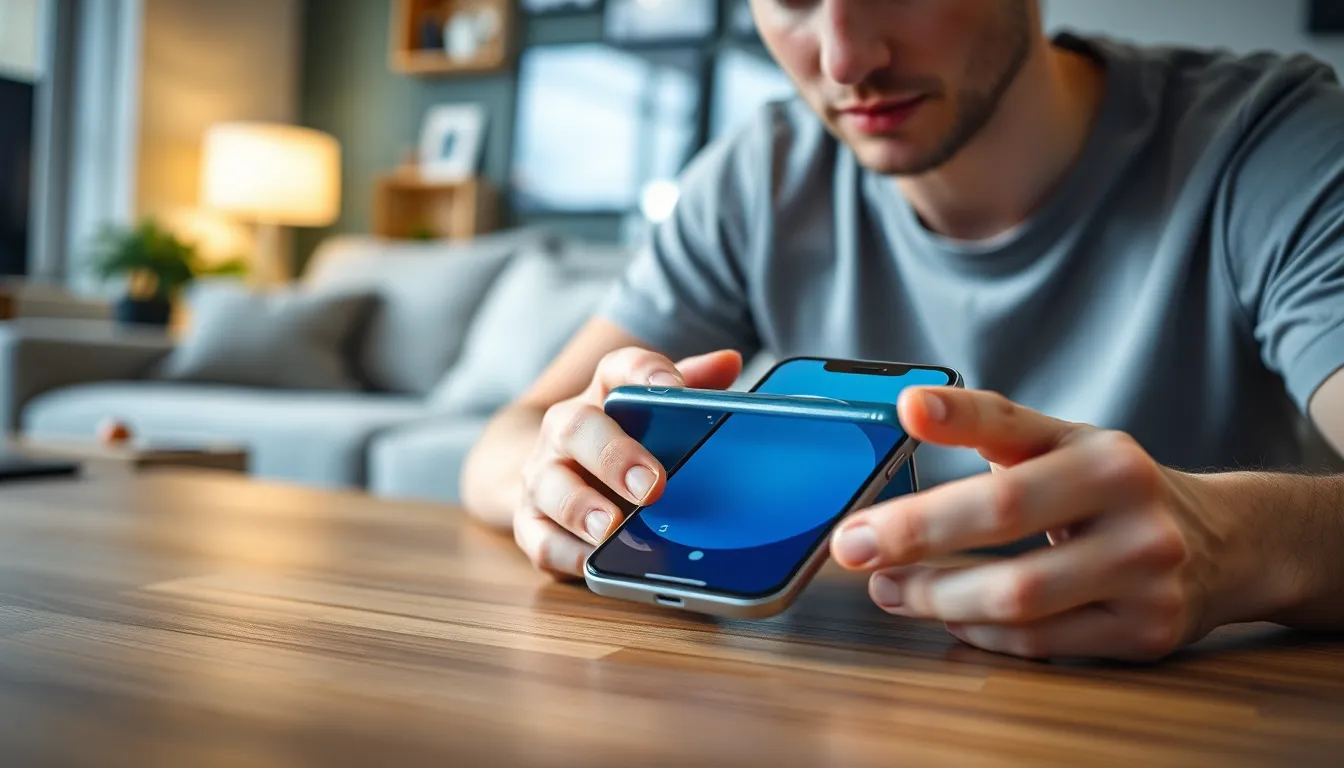In a world where secrets are as fleeting as a Snapchat message, the quest to save those precious snaps without the sender catching on can feel like a high-stakes game of digital hide-and-seek. Whether it’s a hilarious meme or a heartwarming moment, sometimes you just want to keep those memories close—without the sender knowing.
Fear not, iPhone users! With a few clever tricks up your sleeve, you can become the stealthy snap-saver you’ve always wanted to be. Imagine having a treasure trove of funny faces and candid moments at your fingertips, all while keeping your friends blissfully unaware. Get ready to unlock the secrets of saving snaps like a pro, and turn your iPhone into a covert memory vault.
Table of Contents
ToggleUnderstanding Snap Saving
Saving snaps discreetly on an iPhone has become essential for users. This section delves into what snaps are and why individuals choose to save them.
What Are Snaps?
Snaps refer to short-lived photos or videos shared through Snapchat. Each snap disappears shortly after viewing, sparking fun interactions among users. Users can add filters, text, or drawings to enhance their snaps. Content shared in this way often captures spontaneous moments, making them valuable memories. The playful nature of snaps fosters creativity and personal expression, attracting millions to the platform.
Why People Save Snaps
Individuals save snaps for various reasons. They often want to preserve cherished memories or humorous moments to enjoy later. Users might also save snaps for sentimental value, like a message from a friend or a family gathering. Capturing highlights from events can evoke nostalgia. Many view saved snaps as a visual storytelling tool, allowing them to relive significant occasions. By keeping these moments, users create a digital scrapbook, ensuring that favorite memories stay alive.
Methods to Save Snaps Without Knowing

Several effective methods exist to save Snapchat snaps discreetly on an iPhone. Users can choose from options like screen recording, third-party apps, and accessibility features.
Using Screen Recording
Screen recording serves as a straightforward approach to capturing snaps. Users can access this feature through the Control Center by swiping down from the top right of the screen. Before opening Snapchat, it’s essential to enable screen recording. Once activated, playing the snap begins the recording process, allowing users to save the content without notifying the sender. After capturing, it’s vital to stop recording and save the file to the Photos app for later viewing.
Third-Party Apps
Utilizing third-party apps offers another method for saving snaps discreetly. Various applications are available on the App Store, designed specifically for this purpose. Some popular options include SnapSave and Snapsaver. Users can download these apps and follow the on-screen instructions to save snaps directly. These apps often allow for easy access to saved content without alerting the sender, making them a convenient choice for iPhone users.
Exploiting Accessibility Features
Accessibility features present on iPhones also aid in saving snaps unnoticed. Users can enable VoiceOver and take advantage of its screenshot option. By turning on VoiceOver and navigating to the snap, users can capture the screen using the appropriate gesture. This method discreetly saves the snap without sending any notifications to the sender. Leveraging these capabilities enhances the ability to preserve memorable moments seamlessly.
Risks and Considerations
Saving snaps discreetly presents certain risks and considerations. Users must weigh the benefits against potential repercussions.
Privacy Concerns
Privacy stands as a primary concern when saving snaps without consent. Often, individuals expect their shared content to remain ephemeral. Disregarding this expectation might lead to a breach of trust among friends. Many users prefer to share genuine moments without worrying about unauthorized storage. Keeping this in mind, it’s crucial to consider the ethical implications of capturing and saving someone else’s content without their knowledge.
Potential Consequences
Potential consequences may arise from discreetly saving snaps. Users risk facing backlash if the sender discovers that their private moments have been stored without permission. Relationships can suffer due to feelings of betrayal or dishonesty. In some instances, Snapchat accounts may even face suspension if users report unauthorized saving practices. Those who decide to save snaps should evaluate the possibility of negative outcomes. Prioritizing mutual respect and understanding is essential to maintaining healthy interactions.
Ethical Considerations
Saving snaps without the sender’s knowledge raises significant ethical concerns. Consideration for privacy stands at the forefront.
Respecting Others’ Privacy
Individuals sharing snaps expect their content to disappear after viewing. Ignoring this expectation can breach trust among friends and acquaintances. Maintaining transparency enhances relationships. Consent plays a crucial role; asking for permission before saving snaps demonstrates respect and understanding. Discussing intentions openly defines boundaries, thereby promoting healthier interactions. Upholding privacy often builds stronger connections over time. Friends may appreciate the gesture more when involved in the decision-making process. Always remember that respecting privacy contributes to positive experiences in digital communication.
Situations Where Saving Is Justified
In certain contexts, saving snaps may become acceptable. Capturing essential moments from events such as weddings or milestone celebrations can highlight the importance of preservation. When the sender explicitly states that saving snaps is okay, it establishes clarity and mutual respect. Documenting memories for collaborative projects or shared experiences often warrants saving snaps. These situations typically involve shared interests and goals. Another context applies when discussing ongoing conversations about sensitive topics or memories that hold sentimental value. Such cases motivate users to save snaps while still honoring the original context. Balancing ethical considerations with the intent behind saving can lead to positive outcomes.
Saving snaps discreetly on an iPhone can be a practical way to cherish unforgettable moments. By employing clever techniques like screen recording or using specialized apps, users can keep their favorite memories without alerting the sender. However, it’s crucial to navigate this process with care. Respecting privacy and maintaining trust in relationships should always be a priority.
Ethical considerations play a significant role in digital interactions. Seeking consent before saving snaps can prevent misunderstandings and foster healthier connections. Ultimately, balancing the desire to preserve memories with the respect for others’ privacy ensures that users can enjoy their digital experiences while cultivating meaningful relationships.






